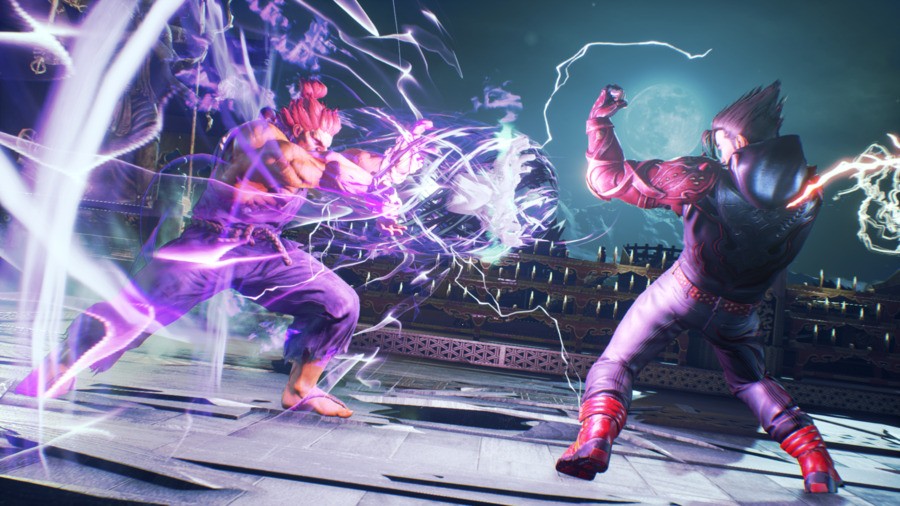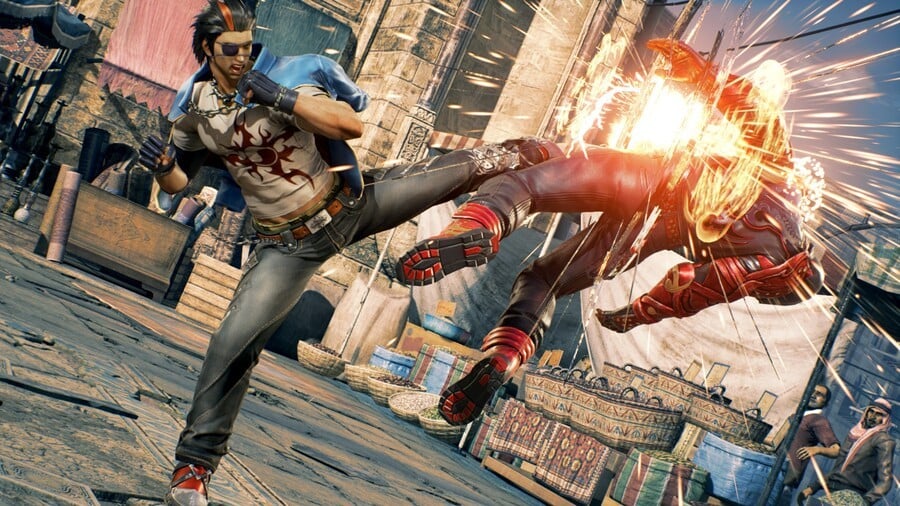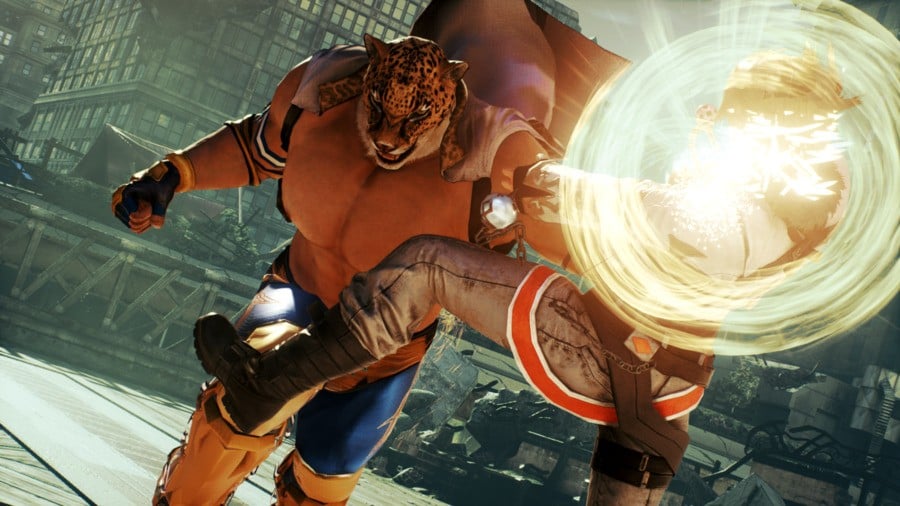
Ah, fighting games. Sometimes the mere mention of the genre is enough to disinterest more casual onlookers, but Tekken has always been quite an accessible series. It's easy to pick up and play, but takes a long, long time to truly master. Button mashing is absolutely an option when it comes to Tekken, but if you really want to understand the intricacies of its combat system and improve, then you need to have a firm grasp on the basics.
In this guide, we're going to go over the very foundations of Tekken 7 – the newest entry in the franchise. For absolute beginners, this is the kind of stuff that you can build upon through practising against the computer or by challenging your friends to casual matches. These points may seem obvious to some, but having a clear understanding of the fundamentals is crucial in any competitive activity, be it video games or even sport.
So without further ado, let's go over the absolute basics of Tekken 7, and hopefully, you'll understand the game better by the time that we're done.

Attacking
In Tekken 7, you have four attack buttons, each one of them assigned to a different limb of your character. Square is your left arm, Triangle is your right arm, X is your left leg, and Circle is your right leg. Pressing different combinations of these buttons results in various attacks depending on your chosen character. Pressing or holding different directions in conjunction with these four buttons may also result in even more attacks.
If you go into training mode in Tekken 7, you'll notice that every character has a huge list of available moves - but don't let this scare or deter you. While learning every single possible move obviously has its advantages, you'll really only need to practice with a set few to get started. Pick the ones that you find easy to pull off and work from there.
Needless to say, attacking in Tekken 7 is necessary in order to win a match, but constantly throwing out moves is rarely a good idea. Try to mix things up with fast attacks, like jabs, and longer-reaching attacks, like kicks. Pay attention to the distance between you and your opponent, and try to think about which attack would be best suited to the situation.
Different types of attacks
There are three types of basic attacks in Tekken 7: High attacks, Mid attacks, Low attacks.
- High attacks hit standing opponents, but miss enemies who are crouching. They can be blocked by a standing opponent.
- Mid attacks hit both standing and crouching opponents. They can be blocked by standing opponents, but cannot be blocked by crouching opponents.
- Low attacks hit both standing and crouching opponents. They cannot be blocked by standing opponents, but they can be blocked by crouching opponents.
As you can see, each type of attack has its uses, so it's best to try and use all three. If your opponent is always blocking your high or mid attacks, try picking away with a low attack. Likewise, if your enemy is keen on ducking and blocking low to stop any low attacks from connecting, attempt to catch them with a mid attack. If you can mix things up between High, Mid, and Low attacks, you'll keep your opponent guessing, and that's crucial when it comes to breaking through someone's defence.
Defending
Defending is just as important as attacking. There are two forms of basic defence in Tekken 7: Standing guard and Crouching guard. To guard while standing, simply hold back on the directional pad. To guard while crouching, press down and back together on the directional pad.
- Standing guard blocks any high or mid attacks, but does not block low attacks.
- Crouching guard blocks any low attacks and causes high attacks to miss, but does not block mid attacks.
Defending is easy enough to perform, but the skill lies in guarding only when you know you have to. If your opponent is throwing out move after move after move, and you do nothing but block, all you're doing is inviting more pressure. Use guarding to force your enemy into making a mistake, and once you think that you can see an opening, let loose with your own attacks.
Movement
Alongside attacking and defending, movement is the third core pillar of Tekken 7. To move forward or backwards, simply press forward on the directional pad, or backwards on the directional pad. Press down to crouch, and press up to jump.
However, unlike a 2D fighting game such as Street Fighter, Tekken 7 is completely 3D. This means that you're free to move not just forwards and backwards, but to the side as well. In order to perform a short and quick sidestep, tap up or down twice. In order to sidestep and then continue to walk to the side, tap up or down twice, and then hold the direction.
Sidestepping is an important tool in Tekken 7. It lets you angle your approach and potentially get around the side of your opponent, opening them up for an attack. However, sidestepping isn't a guaranteed easy way to avoid incoming blows, so don't rely on it as a defensive technique – especially if you're only just starting out. Most of the time, you'll be better off simply trying to guard.
Perhaps the most important aspect of movement in Tekken 7 is using forward dashes and back dashes in order to alter the distance between you and your opponent. Forward dashes quickly close the gap, and can be performed by tapping forward twice. Hold forward down on the second tap and you'll break into a sprint if there's enough distance between you and your foe. Back dashes allow you to quickly step away from your opponent, and can be preformed by tapping back twice. You can also hold back on the second tap in order to guard straight away.
Use dashes correctly, and you can control space as you see fit. Forward dashes can get you right up in your enemy's face, while back dashes can keep you at a safe distance.

The Rage System
Tekken 7's Rage system consists of two main elements: Rage Arts and Rage Drives.
What is Rage?
Rage is a state that automatically activates when a character's health drops below 20 per cent or thereabouts. All characters have access to Rage, and it can happen in every round of a match. When Rage activates, the character gets a damage increase across all of their attacks and they're enveloped in a red aura. Their health bar will also flash red.
What are Rage Arts?
Rage Arts are essentially super attacks. They can be used only when a character is in Rage, and once they've been activated, that character's Rage disappears. All characters have access to a Rage Art.
How do I use a Rage Art?
Rage Arts, just like any normal move, have specific inputs. The majority are relatively simple to activate – they usually only require pressing a couple of buttons at once. You can always check the correct input by pausing the game and looking at your move list.
Beginner players might find it useful to set Rage Arts to a specific button on their controller, making them very easy to use.
How do Rage Arts work?
Once a Rage Art is activated, an animation will begin to play. If your attack connects with your opponent, a cinematic move will unfold. Once a Rage Art hits, everything is automatic – there are no extra inputs that you have to learn or be familiar with. Simply sit back and watch the show.
When you first activate a Rage Art, your character will shrug off any incoming attacks for a very brief period before the Rage Art connects. This means that Rage Arts are a great way to catch your opponent out – especially if they're attacking like crazy.
However, any attacks that do hit you while you begin your Rage Art will still do damage. If you don't have enough health to take that damage, you'll still be KO'd.
Rage Arts can also be blocked, and in some cases, ducked under. If your Rage Art is blocked, you'll be left wide open, so be sure to learn the best time to use them.
What are Rage Drives?
Unlike Rage Arts, Rage Drives aren't super moves, but they'll still use up your Rage when activated. Rage Drives are basically more powerful versions of existing moves. When you use one, your character will glow blue for a brief period.
Rage Drives are more technical than Rage Arts, and their uses vary much more between characters. For example, the character Feng Wei has a shoulder bash move that's great for striking back against an opponent who just missed an attack or left themselves open. When in Rage, Feng Wei can use this same attack, but as a Rage Drive. The Rage Drive version of the attack is much faster, and can knock his opponent flying across the stage.
Generally speaking, beginner players shouldn't worry too much about Rage Drives, as they're best used in more advanced play. They can add to combos, open up enemies to new combos, and even render an opponent helpless for a brief period. Of course, it's still good to have some knowledge of them, regardless of your skill level.





Comments 1
Great guide!
Tap here to load 1 comments
Leave A Comment
Hold on there, you need to login to post a comment...